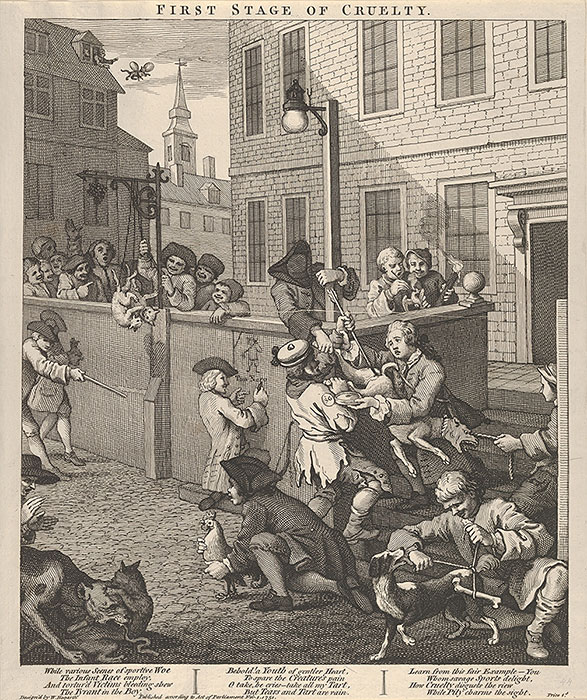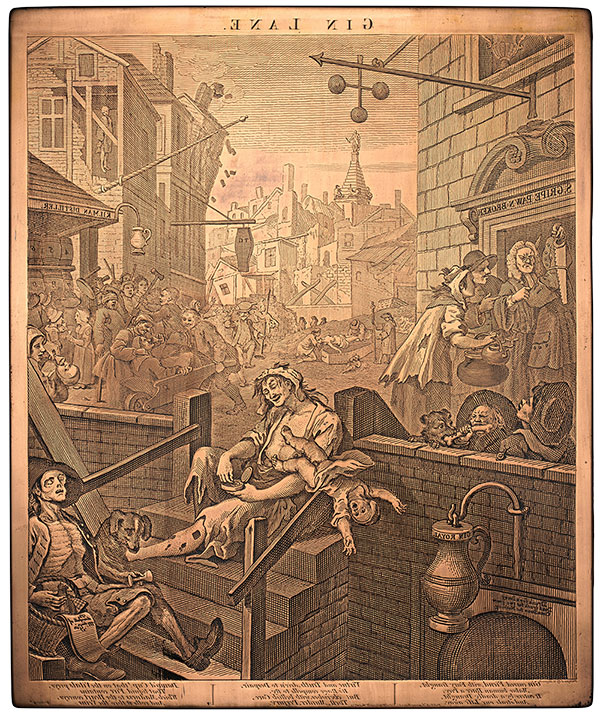
Hogarth’s prints for the Stages of Cruelty appeared on 21 February 1751, a week after Beer Street and Gin Lane were issued. These four prints were executed in the same coarse, linear style, and Hogarth’s moral purpose was hammered home through verses by the same author, the artist’s friend Reverend James Townley. Here Hogarth added a badge with the initials SG to Tom Nero’s jacket sleeve, indicating he is in the care of the parish of St. Giles-in-the-Fields, the location represented in Gin Lane. Hogarth added another instance of torture behind the balustrade at right: two boys hold a bird, and one blinds it using a heated wire.

First Stage of Cruelty
1751
Etching and engraving; first state of two
Metropolitan Museum of Art, New York
William Hogarth (1697–1764)
Gin Lane
1751
Copper plate (etched and engraved)
The Metropolitan Museum of Art, Rogers Fund, 1921, 21.55.3
Jennifer Tonkovich:
William Hogarth first gained his fame by making print series after his own paintings, but later in his career as the artist tackled political issues close to his heart, he used drawings alone to design satires. Drawings could be completed more quickly than paintings, allowing him to respond rapidly to pressing issues as we see with The Four Stages of Cruelty. Engraving a copper plate such as the one of Gin Lane in the case behind you was a multi-step process. From the outset, Hogarth had to conceive of the composition in reverse for, when he printed the copper plate, the scene would be flipped. It's not entirely clear how Hogarth transferred each drawing's design to the plate. He may have coated the copper with white wax and then covered the back of the drawing with red chalk. When he traced the drawing on the plate, lines of red chalk would be left on the white surface.
While the drawings on display in this exhibition show evidence of tracing the differences between the Morgan sheets and the final prints suggest there was likely yet another set of drawings used for transfer, which are probably lost. After the transfer, Hogarth used a needle to scratch the design into wax. The plate would then be submerged in an acid bath and the acid would bite into areas unprotected by wax, leaving incised lines to hold ink for printing. Rarely satisfied with these initial results. Hogarth further developed the design by engraving directly onto the plate with a burin strengthening shadows and refining the composition. Once he was happy with the plate, he was able to print hundreds of impressions. Hogarth was a savvy businessman and when he sold a set of prints in 1751, he advertised two versions. The more expensive version was printed on a finer paper intended for connoisseurs.
